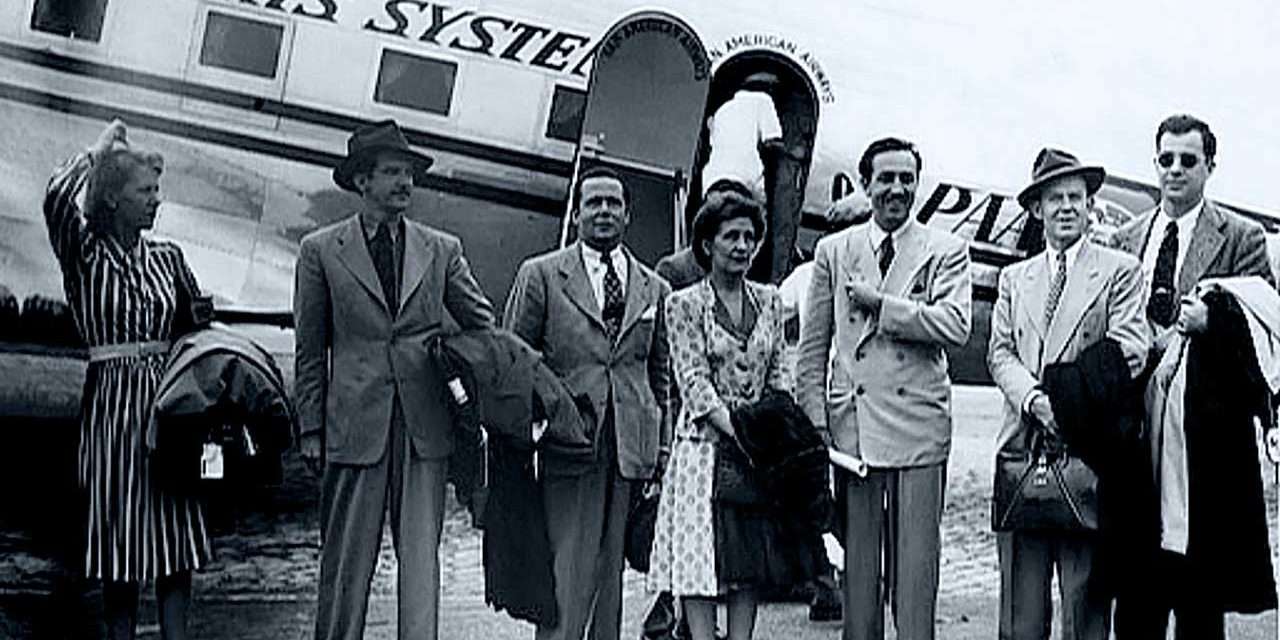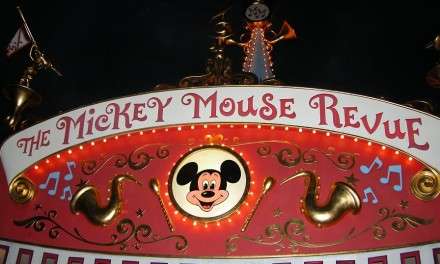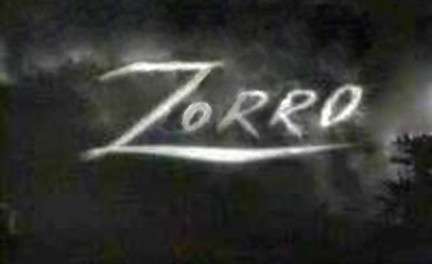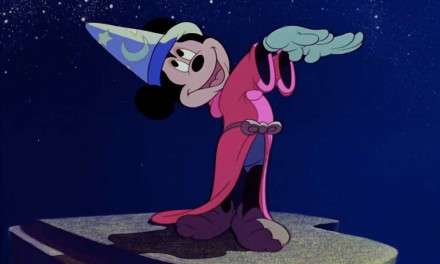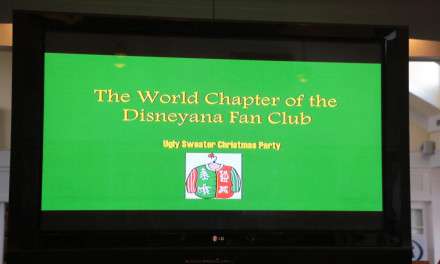Walt Disney was many things, but most fans perchance do not realize that he was one of America’s biggest patriots and stalwart defenders. This love of country was revealed most evidently just before the United States entered World War II, during what became Walt Disney’s “Good Will” tour of Latin American Countries. It was during the time of the iniquitous “Animators Strike”; in addition, the Disney studios owed more than 3 million dollars in loans to Bank of America. Because of the War raging in Europe, that market for his animated features was closed, cutting his profit margins substantially. Walt did not know it at the time, but when the “Day of Infamy” occurred on December 7th later that year that the government would requisition half the studio as a base for antiaircraft troops. Also in 1940, much to Walt’s chagrin, the company went public on the stock exchange to help with mounting losses. Walt was feeling pressured and did not want another breakdown like in 1931. He needed a change of scenery.
Like “magic” this change of scenery can in the form of a government-sponsored “Good Will” tour of South America. Before the United States entered the war, it realized that the conflict could envelop the whole globe. In 1940, a newly-formed government post known as the Coordinator of Inter-American Affairs knew that Nazi influence was creeping into many Latin American countries. The United States feared that many of the immigrants in South America had sympathy to their former homeland and supported the Axis cause. And several Latin American governments had close ties with Nazi Germany. If realized, this could make South America a potential threat to the United States.
This new post, headed by Nelson Rockefeller began asking Hollywood luminaries, even world-known Errol Flynn to visit Latin American countries, to utilize Latin American themes into Hollywood films and generate goodwill between the Americas. However, these attempts failed miserably, and in some cases, produced the opposite effect. By early 1941, the Latin Americas countries tired of U.S. ambassador’s attempts at harvesting favor. It was then the U.S. government called upon Walt Disney. Foremost, Mickey Mouse and other Disney characters were popular in Latin America. And Walt Disney was known worldwide as the father of Mickey.
After being contacted, Walt stated in an interview… “That he welcomed the opportunity to get out of the studio at that time because you get in a rut”. “You begin to get tired. But this thing—it’s like a new lease on life. I was asked by the government to go to South America as a kind of cultural thing and I went down with some staff to see if we couldn’t make some film about the countries down there. At first, they wanted me to go on a hand-shaking goodwill tour and I said I didn’t go for that. And they came back and said, ‘Well, you go down and make some films about these countries’ and I said, ‘Well, that’s my business. I can do that.”
The government paid for $70,000.00 in expenses and guaranteed $50,000.00 each for five short cartoons based on his trip experiences. The furthered enticed cash-strapped Walt that if the films were profitable, the subsidy was to be refunded back. The contract was signed in early August, but Walt had already selected who he would bring with him by late July. He personally handpicked his staff, and interviewed each one personally, later giving specific tasks for each one. Finally, a total of 18 made up the Disney group, 15 employees, two wives, one was Walt’s wife Lillian, and Walt. When Walt’s plane landed in Rio de Janeiro on August 17th, 1941, the goodwill tour officially began. Because of a mix-up, and hotel shortages, the group had to split up. Walt and Lillian and four others roomed at the Copacabana Palace Hotel, the rest stayed at the Hotel Glória. The tour became known as “El Grupo”, the group. It appears the tour received that moniker at the Hotel Glória. When Walt would call over there, the bellhop would call out…” Disney! El Grupo Disney!”
Walt was famous for researching a country and its history before visiting, and the Studio spent weeks preparing research papers and books with facts on indigenous trees, cacti, birds, animals, festivals, popular games and dances, traditions, folklore, and even research on famous singers and artists. Forearmed with facts, Walt assigned everyone his job… Chuck Wolcott was in charge of music, Larry and Janet Lansburgh would work on animals and characterizations and Herb Ryman would scrutinize landscapes, buildings, and people. Webb Smith, Bill Cottrell and Ted Sears would be the story developers. For character development, Jack Miller, Jimmy Bodrero and Lee and Mary Blair were given the nod. Frank Thomas would work with Norm Ferguson on animation, with Norm Ferguson as the producer-director. Fans might recall that Fergie was responsible for the animated flypaper sequence in the short, Playful Pluto (1934).
And Jack Cutting, who spoke fluent Spanish, would confirm the authenticity and consult on the foreign language versions. He previously was in South America to observe the Portuguese and Spanish versions of Dumbo and Bambi and the Reluctant Dragon. And John Rose would handle administrative matters. Before the official start of the tour in Rio, Walt’s plane landed in Belem, Brazil for fuel. Bill Cottrell, his brother-in-law stated that hundreds of school children greeted Walt. “They might not have known who the president of their own country was,” Cottrell said, “but they all knew Walt Disney.”
The magic of Disney was evident…Despite all the failed goodwill missions, Walt and his troupe were greeted enthusiastically wherever they appeared and were treated like royalty. The first stop was Rio de Janeiro. President Getúlio Dornelles Vargas welcomed them with sumptuous state dinner party. At the Brazilian premiere of Fantasia, Walt headed the occasion and a charity benefit hosted by Vargas’ wife, Darci. Then, “El Grupo” spend their time with visits to beaches, schools, zoos, farms and art galleries. They studied native music, attended nightclubs and festivals, and of course enjoyed local food and drinks.
They spent three weeks in Rio, then traveled to Buenos Aires, Argentina. At the Alvear Palace Hotel, Walt set up a temporary animation studio in order to work on concepts for future films and story ideas. They met with singers, painters, composers, and poets and regularly attended festivals, nightclubs and learned many native dances. El Grupo also attended many “Asados” or sumptuous barbecues. While watching gauchos rope and break wild horses, even Walt got into the spirit, donning a black gaucho outfit, everyone stated he looked like a native. Frank Thomas said… “Mainly we were constantly wined and dined all over the place and it was really hard to find time to do any work,” Herb Ryman added… “Wherever we went, we were welcomed with open arms by all the presidents, leaders and dignitaries we encountered. We were all together, absorbing the spirited music, the flamboyant dancing, the colorful costumes, the background, the folklore and the history of these countries.”
After Argentina, the group split into four smaller groups, seeking new locations in South America for material for future animations. Ryman, Miller, Lee, and wife Blair went to La Paz Bolivia and the Lake Titicaca region. This trip stimulated a Donald Duck segment in the upcoming film as an irrepressible U.S. tourist in a dispute with a stubborn llama. Larry Lansburgh, Frank Thomas and Jim Bodrero traveled to Northern Argentina, Gaucho Country. The information gleaned was used in the cartoon “El Gaucho Goofy” as an inept American Cowboy learning how to be a Gaucho. Some of the group flew to Chile, and Walt Cottrell, Sears, and Ferguson traveled to Mendoza in Argentina and even flew over the Andes Mountains.
So, what was the outcome of this adventure? On September 29th, the El Grupo reunited in Santiago, Chile. On October 4, instead of flying, they boarded the T.E.S. Santa Clara and began the long voyage home. “I was so worn out by the time we reached Chile that the boat trip home was the only way I could get any rest,” claimed Walt about the 17-day sea voyage home on the Grace Lines’ Santa Clara. It also allowed more time to work out story ideas and sketches. It was also during the trip that Walt received word from his brother Roy that the animators’ strike had been settled, and not particularly in the Studios’ favor. Roy also had to break the news via telegram that their father, Elias Disney, had passed away.
The films that resulted from the goodwill tour were Saludos Amigos (1942) and to years late, The Three Caballeros (1944) was well-received by critics and audiences alike. Saludos Amigos (Greetings, Friends) was the sixth Disney animated feature film and the first of the six package films produced by Walt Disney in the 1940s. It is comprised of four different segments… Lake Titicaca: In this segment, American tourist Donald Duck Visits Lake Titicaca and meets some of the locals, including a headstrong llama. El Gaucho Goofy: Here in this segment, American cowboy Goofy gets taken mysteriously to the Argentinian pampas to learn the ways of the gaucho. This segment later edited a scene with Goofy smoking a cigarette. In the segment, Aquarela do Brasil, (Portuguese for “Watercolor of Brazil”), features the first appearance of José Carioca, the Brazilian cigar-smoking parrot. José Carioca is showing Donald Duck around South America, having a drink of cachaça with him and introducing him to the samba.
The final segment, Pedro: Pedro is a small anthropomorphic airplane from an airport near Santiago, Chile. engaging in his very first flight to pick up air mail from Mendoza, with disastrous results occurring when near Aconcagua, and again while chasing a vulture on the return journey. And to make matters worse, Pedro gets caught in a storm! But, he makes it back to the airfield safe and sound with the mail, revealed to only be a single postcard.
Walt and El Grupo had done it. The South American films made by the Disney Studios were successes in both the Americas. The government never lost a nickel on them. In an interview later, Walt summed it up succinctly… “When the Office of the Co-ordinator of Inter-American Affairs asked us to make Saludos Amigos we had one purpose: to make a picture both Americas would like so that in the end, they would like one another better. While half of this world is being forced to shout ‘Heil Hitler, our answer is to say, ‘Saludos Amigos’.”

